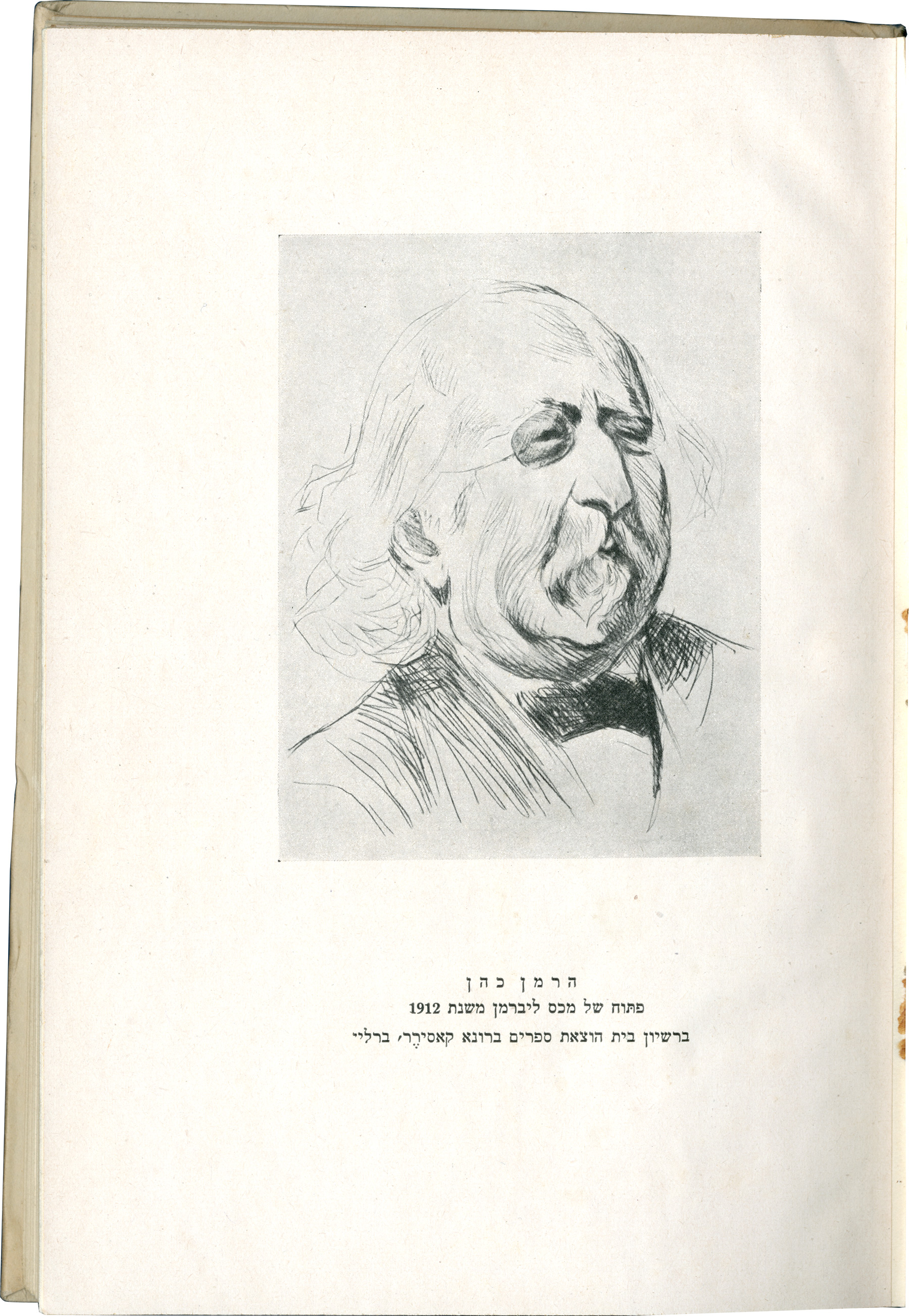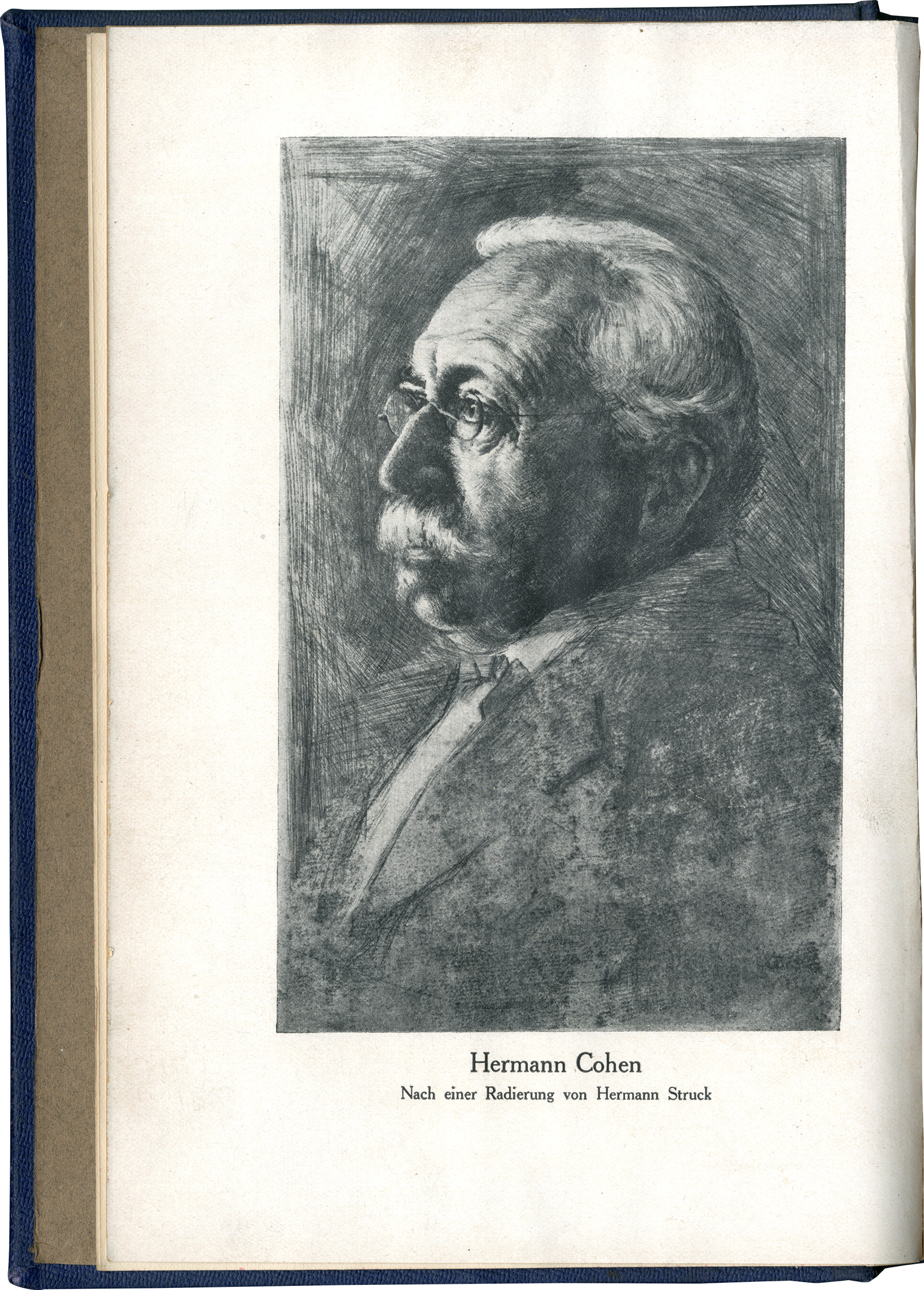The best known images of the neo-Kantian Jewish philosopher Hermann Cohen are from a series of etchings and drawings by the German-Jewish impressionist Max Liebermann. In most of them, he looks just like one expects a rationalist to look: eyes squinted so as better to look into his own mind, and more than a little snooty. (On the other hand, this drawing by Liebermann, might make some Americans think of fried chicken).
But in 1919, shortly after Cohen's death, his student Jacob Klatzkin wrote a small book in German about Cohen's thought that had, as its frontispiece, a reproduction of an etching by Hermann Struck (who taught Liebermann, as well as Marc Chagall). While the original German edition did not include the Lieberman engraving, Klatzkin's Hebrew edition, published in Berlin in 1923 did. Like Klatzkin's book, Struck's etching is a representation of a non-Zionist by a committed Zionist. It is a stronger intervention into Cohen's persona, and into his rationalism, than any of Liebermann's drawings. I remain struck by the detail around the eyes. What does Cohen see off in the distance? Why does he look so quizzical, or even apprehensive? What happens to a rationalist before he starts reasoning?


